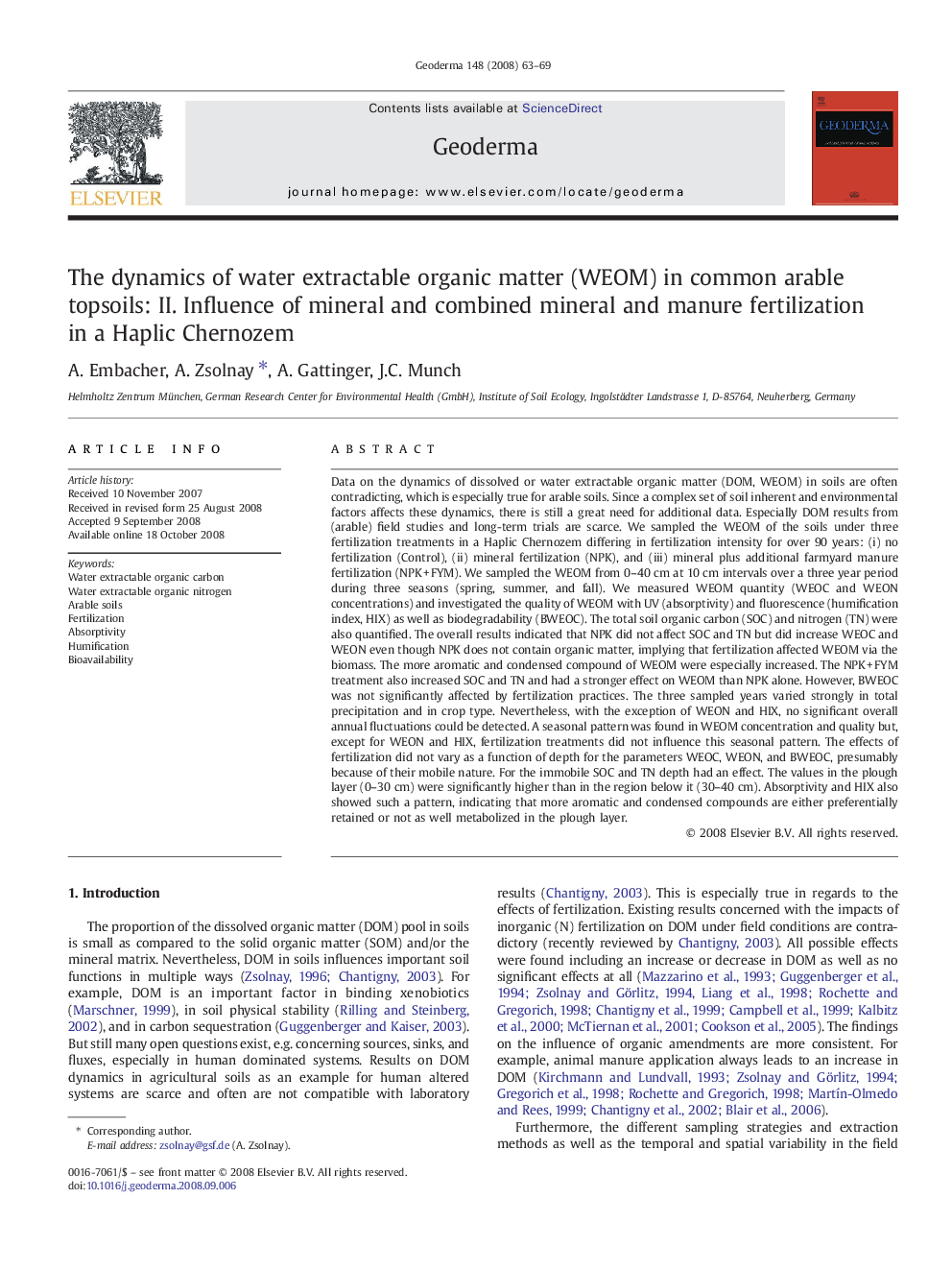| کد مقاله | کد نشریه | سال انتشار | مقاله انگلیسی | نسخه تمام متن |
|---|---|---|---|---|
| 4574783 | 1332503 | 2008 | 7 صفحه PDF | دانلود رایگان |

Data on the dynamics of dissolved or water extractable organic matter (DOM, WEOM) in soils are often contradicting, which is especially true for arable soils. Since a complex set of soil inherent and environmental factors affects these dynamics, there is still a great need for additional data. Especially DOM results from (arable) field studies and long-term trials are scarce. We sampled the WEOM of the soils under three fertilization treatments in a Haplic Chernozem differing in fertilization intensity for over 90 years: (i) no fertilization (Control), (ii) mineral fertilization (NPK), and (iii) mineral plus additional farmyard manure fertilization (NPK + FYM). We sampled the WEOM from 0–40 cm at 10 cm intervals over a three year period during three seasons (spring, summer, and fall). We measured WEOM quantity (WEOC and WEON concentrations) and investigated the quality of WEOM with UV (absorptivity) and fluorescence (humification index, HIX) as well as biodegradability (BWEOC). The total soil organic carbon (SOC) and nitrogen (TN) were also quantified. The overall results indicated that NPK did not affect SOC and TN but did increase WEOC and WEON even though NPK does not contain organic matter, implying that fertilization affected WEOM via the biomass. The more aromatic and condensed compound of WEOM were especially increased. The NPK + FYM treatment also increased SOC and TN and had a stronger effect on WEOM than NPK alone. However, BWEOC was not significantly affected by fertilization practices. The three sampled years varied strongly in total precipitation and in crop type. Nevertheless, with the exception of WEON and HIX, no significant overall annual fluctuations could be detected. A seasonal pattern was found in WEOM concentration and quality but, except for WEON and HIX, fertilization treatments did not influence this seasonal pattern. The effects of fertilization did not vary as a function of depth for the parameters WEOC, WEON, and BWEOC, presumably because of their mobile nature. For the immobile SOC and TN depth had an effect. The values in the plough layer (0–30 cm) were significantly higher than in the region below it (30–40 cm). Absorptivity and HIX also showed such a pattern, indicating that more aromatic and condensed compounds are either preferentially retained or not as well metabolized in the plough layer.
Journal: Geoderma - Volume 148, Issue 1, 30 November 2008, Pages 63–69